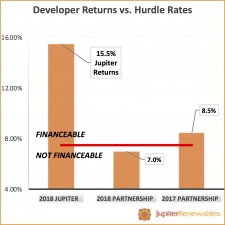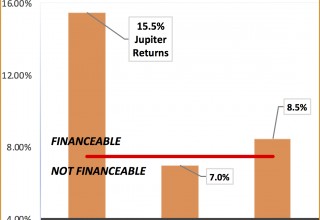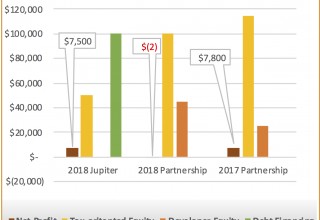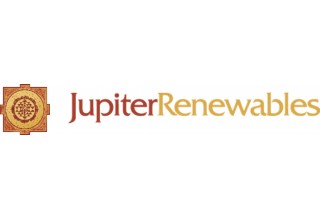Putting the Win Back in Wind Energy …

ARMONK, N.Y., February 2, 2018 (Newswire.com) - Developers take note: The 2017 Tax Cuts and Jobs Act may have momentarily taken the wind out of wind energy, but the industry is fighting back. The new tax law which decreases tax benefits for renewable energy has left developers and investors searching for a profitable path forward. Jupiter Renewables offers an alternative to the outdated Disproportionate Allocation Partnership. The new model yields a 15-16 percent return on investment while minimizing risk. The company’s patented financing structure provides a new avenue to invest in the environment-friendly renewable energy source that increases value potential and avoids consolidation. This means that developers can invest in wind farms without the hassle of finding a joint venture partner to achieve non-consolidation. At the same time, they can achieve their goals of double-digit IRRs. Employing Jupiter’s suite of tools, developers will not have to scale back their investment pipeline.
“The structure is straightforward,” notes Jupiter Renewables Managing Partner David Freund. “Every project is supported by third-party financial guarantees for wind speed and equipment performance. This allows us to replace the expensive capital in the capital stack with lower cost debt in a way that is acceptable to the tax investors and does not consolidate for the developers.” Jupiter Renewables is already working with two of the top three reinsurers worldwide.
The time has come for renewable energy financing that is based on innovation and increasing productivity. This is the future, and the shareholders need to demand these improvements.
David Freund, Managing Partner
Representative of the model’s upside is a Midwestern project that was developed by a large publicly traded European utility. Currently shovel-ready, the project stalled as its formerly healthy proforma return on investment turned negative with the new law which dramatically reduces the financial advantage of tax losses. But converting to the Jupiter paradigm it is now set to achieve the same returns as before the tax law change with the same net cash flow.
The renewable energy industry has relied on financing techniques that date back to the 1970s when the structure was used for oil and gas. “While that may have made sense when Jimmy Carter was president, much has changed in 40 years. The time has come for renewable energy financing that is based on innovation and increasing productivity,” Freund says. “This is the future, and the shareholders need to demand these improvements. “
Media Contact:
David Freund
914-273-2212
david@jupiterrenewables.com
Source: Jupiter Renewables, LLC


